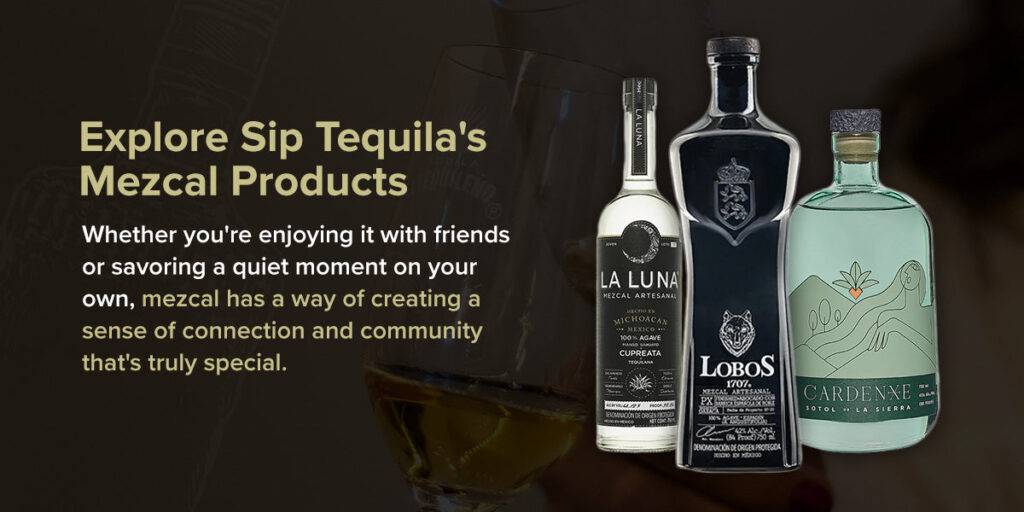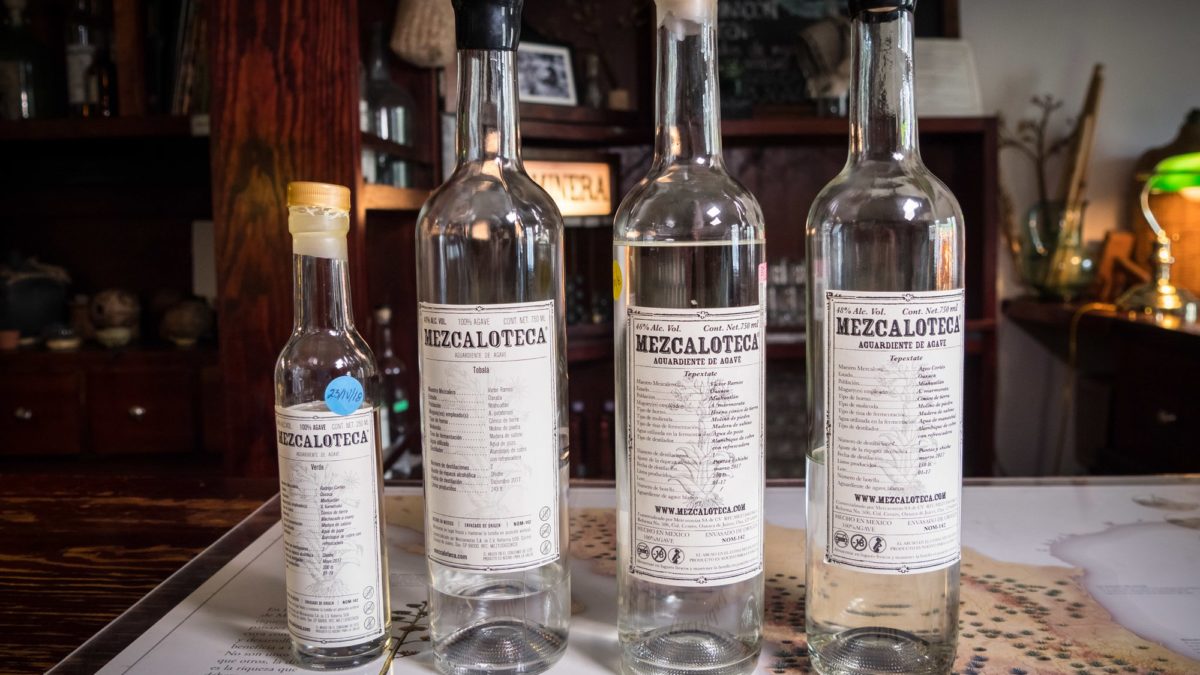If you’re a fan of agave spirits, then a trip to Mexico is a must. In this article, you’ll uncover the authentic flavors of tequila and mezcal, two iconic Mexican drinks that have gained worldwide recognition. From the rolling blue agave fields of Jalisco to the traditional palenques of Oaxaca, you’ll embark on a journey that unravels the rich history, production methods, and distinct flavors of these beloved spirits. Get ready to tantalize your taste buds and discover the true essence of tequila and mezcal in their birthplace, Mexico.
History of Tequila and Mezcal
Tequila and mezcal are two of Mexico’s most famous and beloved spirits, each with their own unique history and characteristics. Understanding the origins of these beverages can provide valuable insight into their flavors and cultural significance.
Origin of tequila
Tequila has a fascinating origin story that dates back centuries. It all began with the agave plant, a succulent found in the Jalisco region of Mexico. The indigenous people of this area, the Aztecs, were the first to discover the magical properties of the agave plant.
They believed that the agave plant was a gift from the gods and used it in a variety of ways, including using the sap (known as aguamiel) as a natural sweetener and fermenting it to create a traditional alcoholic beverage. This early concoction would eventually evolve into the tequila we know today.
Origin of mezcal
Mezcal, on the other hand, has a longer and more complex history. Its roots can be traced back to pre-Hispanic times when the indigenous Zapotec and Mixtec communities inhabited the Oaxaca region of Mexico. These communities were already familiar with the agave plant and its various uses.
As the Spanish conquistadors arrived in 1521, they encountered the native populations and discovered their drinks made from fermented agave. They began calling these beverages “mezcal,” a word derived from the Nahuatl language, meaning “oven-cooked agave.” Over time, mezcal evolved into a distinct spirit with its own production methods and unique flavors.
Differences between tequila and mezcal
While both tequila and mezcal stem from the agave plant, there are some important distinctions between the two. The most significant difference lies in the specific type of agave used and the regions where they are produced.
Tequila is produced solely from the blue agave plant and can only be legally produced in certain regions of Mexico, with Jalisco being the primary area. Mezcal, on the other hand, can be made from various types of agave plants, resulting in a wider array of flavors and aromas. Mezcal production extends beyond the designated mezcal-producing regions, including Oaxaca, Durango, Guerrero, and several other states.
The distinct flavors and production techniques employed in tequila and mezcal give each spirit its own unique character, making them both beloved and sought-after beverages around the world.
Tequila
Tequila is a versatile spirit that can be enjoyed in various forms, from sipping it straight to using it as a base for delicious cocktails. Understanding the different aspects of tequila production, types, and methods used can elevate your tequila experience.
Tequila production regions
Tequila is strictly regulated in terms of its production regions. The majority of tequila production occurs in the Mexican state of Jalisco, specifically in the municipalities of Tequila, Amatitán, and Arandas. However, there are other regions within Mexico, such as Guanajuato, Michoacán, Nayarit, and Tamaulipas, that are also authorized to produce tequila.
Each region brings its own unique terroir and agave characteristics to the tequila produced, resulting in subtle variations in flavor and aroma. Exploring tequilas from different regions can lead to a deeper appreciation for the complexity of this spirit.
Types of tequila
Tequila is available in several different categories, each with its own set of regulations regarding aging and production methods. The main types of tequila include Blanco (also known as Silver or Plata), Reposado, Añejo, and Extra Añejo.
Blanco tequila is typically unaged or aged for a short period, resulting in a clean and vibrant flavor profile. Reposado tequila is aged in oak barrels for a minimum of two months, providing a smoother and more complex taste. Añejo tequila is aged for at least one year, offering deeper flavors and a richer character. Lastly, Extra Añejo tequila is aged for a minimum of three years, resulting in an incredibly smooth and sophisticated spirit.
Understanding the different types of tequila allows you to choose the one that best suits your preferences and occasion.
Traditional methods of tequila production
Traditional tequila production methods involve harvesting and roasting the hearts of the blue agave plant, known as piñas. The roasted piñas are then crushed and the juice is extracted. This juice is fermented and distilled to create tequila.
The traditional process often includes the use of a traditional stone wheel, called a tahona, to crush the piñas. This labor-intensive method adds an extra layer of complexity and flavor to the tequila. Additionally, some tequila producers still use traditional brick or clay ovens for roasting the piñas, adding another dimension to the final product.
Modern techniques in tequila production
While traditional methods play an essential role in preserving the authenticity and heritage of tequila production, modern techniques have also emerged to meet increasing demand and improve efficiency. Many tequila producers now use mechanized shredders or mills to crush the piñas, allowing for faster and more consistent processing.
Modern distillation methods, such as column stills, have also become prevalent in the tequila industry. These techniques can produce larger quantities of tequila in a shorter amount of time. However, there are still tequila producers who prioritize traditional methods, believing that they contribute to a more artisanal and nuanced tequila.
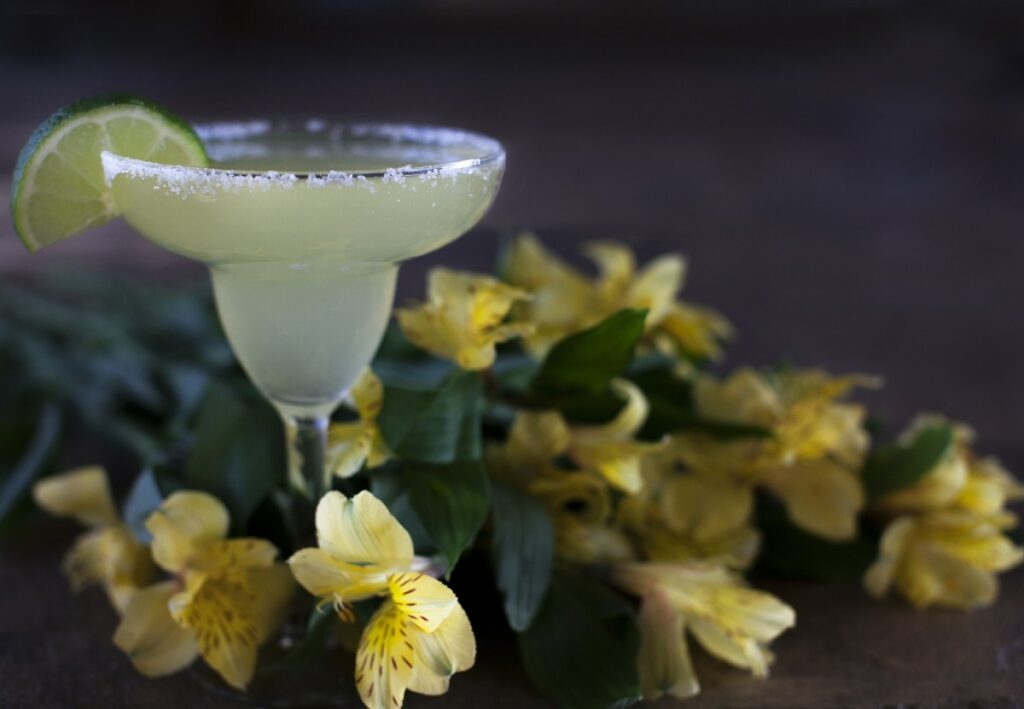
Mezcal
Mezcal has gained a loyal following among spirits enthusiasts due to its smoky and complex flavors. Exploring the world of mezcal opens up a whole new realm of beverage experiences, highlighting the historical and cultural significance of this unique spirit.
Mezcal production regions
Similar to tequila, mezcal production is highly regulated and recognized in specific regions of Mexico. The majority of mezcal production takes place in Oaxaca, which is considered the heartland of mezcal production. However, mezcal can also be produced in several other states, including Guerrero, Durango, Michoacán, San Luis Potosí, and Zacatecas.
Each region has its own distinct microclimates, soil compositions, and agave varieties, resulting in mezcal with specific regional characteristics. Exploring mezcals from different regions can be an enlightening journey through the diverse flavors of Mexico.
Varieties of mezcal
Mezcal boasts an incredible variety of flavors, thanks to the numerous agave varieties used in its production. While there are over 30 species of agave that can be used to produce mezcal, a handful of them are particularly notable.
The most commonly used agave for mezcal production is Espadín, which provides a balanced and versatile flavor profile. Other agave varieties, such as Tobalá, Tobaziche, and Madre Cuixe, offer more unique and distinctive flavors, often praised for their complexity and rarity. Exploring the different agave varieties can unveil a whole new world of mezcal flavors and aromas.
Traditional methods of mezcal production
One of the most fascinating aspects of mezcal production is the traditional and labor-intensive methods still employed by many mezcal producers today. The process typically starts with the harvesting of mature agave plants. The piñas are then roasted in underground ovens, often lined with stones, wood, or charcoal. This cooking process gives mezcal its characteristic smoky flavor.
After roasting, the piñas are crushed using a large grinding stone (tahona), a horse-drawn mill (tahona egipcia), or a mechanical shredder. The fibers and juice extracted from the crushed piñas are then fermented in open-air vats, allowing wild yeasts to interact with the liquid and contribute to the unique flavor profile of the mezcal.
Finally, the fermented liquid is distilled in traditional copper or clay pot stills, resulting in a spirit that encapsulates the rich history and heritage of mezcal production.
Artisanal approaches to mezcal production
In recent years, there has been a resurgence of artisanal mezcal producers who value traditional methods and focus on small-batch productions. These producers often prioritize sustainability, organic farming practices, and community involvement.
Artisanal mezcal producers embrace the traditional techniques passed down through generations, highlighting the importance of preserving cultural heritage and producing mezcal that reflects the true spirit of Mexico. Exploring mezcal from these smaller, craft producers can offer a more intimate and authentic experience, allowing you to savor the craftsmanship and dedication that goes into each bottle of mezcal.
Tasting Tequila
To fully appreciate the complexities and nuances of tequila, it is essential to approach it with the right mindset and techniques. By understanding the characteristics of tequila and employing proper tasting techniques, you can unlock a world of flavors and aromas.
Choosing the right tequila for tasting
When selecting a tequila for tasting, it is crucial to consider the type, aging, and production methods. Each category of tequila offers a unique experience, from the vibrant and fresh notes of Blanco tequila to the rich and mature flavors of Añejo and Extra Añejo tequilas.
Additionally, exploring tequilas from different production regions can provide insights into the diverse terroir of Mexico and how it influences the final product. It is also worth noting that tequilas made from 100% blue agave often offer a more refined and authentic taste.
Characteristics of tequila in tasting
In order to fully appreciate the flavor profile of tequila, it is important to understand its characteristic components. Tequila often exhibits a range of flavors, including herbaceous, citrus, floral, earthy, and sometimes even hints of spices or caramel.
Moreover, tequila can have varying degrees of sweetness, acidity, and bitterness, contributing to its overall balance. The alcohol content and mouthfeel also play a significant role in the tasting experience, with many tequilas offering a smooth and silky texture.
Tequila tasting techniques
To properly taste tequila, start by pouring a small amount into a tulip-shaped glass. Swirl the tequila gently to release its aromas, and then bring the glass to your nose. Take note of the various scents, allowing your olfactory senses to appreciate the complexity and subtleties of the tequila.
After familiarizing yourself with the aroma, take a small sip of the tequila. Allow the liquid to coat your palate and take note of the flavors that emerge. Pay attention to the initial taste, the development on the palate, and the finish. Take your time to savor and analyze each aspect, allowing the flavors to evolve and unfold.
Recommended food pairings with tequila
Tequila pairs exceptionally well with a range of foods, making it a versatile spirit for gastronomic exploration. Some traditional Mexican dishes, such as ceviche, tacos, or mole, beautifully complement the agave-forward flavors of tequila.
Cheeses like aged Gouda or manchego can provide a perfect balance to the sweetness and acidity of tequila. Rich and indulgent desserts, such as chocolate lava cake or flan, can also be enhanced by the complex flavors of an añejo or extra añejo tequila.
Experimenting with different food pairings allows you to discover the delightful interplay between tequila and various culinary creations.

Exploring Mezcal
Diving into the world of mezcal offers a sensory journey filled with distinctive flavors and aromas. From the smoky and earthy notes to the remarkably complex profiles of different agave varieties, exploring mezcal is a true adventure for the taste buds.
Finding the perfect mezcal to explore
When embarking on your mezcal exploration, consider the agave variety and production region. Each agave species contributes unique characteristics to the mezcal, while different regions showcase their own terroir and microclimatic elements.
Choosing mezcal produced by artisanal and small-batch producers can provide a more intimate and authentic experience. These producers often focus on sustainable and traditional methods, resulting in mezcal that highlights the true spirit of Mexico.
Distinctive flavors in mezcal
One of the defining features of mezcal is its smoky flavor, which comes from the traditional underground roasting process. This smokiness can vary in intensity, with some mezcals exhibiting subtle whispers of smoke, while others offer a bold and pronounced character.
Beyond the smokiness, various agave varieties contribute different flavor profiles to mezcal. From floral and citrus notes to earthy and herbaceous undertones, the range of flavors in mezcal is vast and dynamic.
Mezcal tasting rituals
To fully appreciate the complexity and depth of mezcal, it is helpful to follow a tasting ritual that allows you to engage all your senses. Begin by pouring a small amount of mezcal into a tasting glass. Observe the color, clarity, and viscosity of the liquid, taking note of any intriguing visual aspects.
Next, bring the glass to your nose and inhale gently, allowing the aromas to envelop your senses. Take your time to detect the various scents, which may include smoky notes, floral hints, or earthy undertones.
When ready, take a small sip of the mezcal and allow it to linger on your palate. Notice the initial flavors, the way they develop as you hold the mezcal in your mouth, and the final finish. Take note of any evolving flavors or lingering aftertastes.
Traditional accompaniments for mezcal
Traditionally, mezcal is enjoyed in a social setting, often accompanied by certain rituals and pairings. Sangrita, a traditional Mexican accompaniment, is often served alongside mezcal. This vibrant and spicy tomato-based drink provides a contrasting flavor profile to mezcal and provides a refreshing palate cleanser between sips.
Additionally, a side of sliced oranges or citrus fruits can be served to enhance the flavors of the mezcal. The citrus helps to cleanse the palate and amplify the sensory experience. Exploring these traditional accompaniments can add depth and authenticity to your mezcal tasting journey.
Tequila and Mezcal Cocktails
Tequila and mezcal are incredibly versatile spirits that lend themselves to an array of cocktail creations. From classic recipes to modern interpretations, these spirits can be mixed with a wide range of ingredients to create delicious and refreshing cocktails.
Classic tequila-based cocktails
Several classic cocktails are centered around tequila, showcasing the spirit’s versatility. The Margarita, perhaps the most widely recognized tequila cocktail, combines tequila with lime juice and orange liqueur. Its refreshing and tangy flavor profile makes it a perennial favorite.
The Paloma, another popular tequila cocktail, combines tequila with grapefruit soda, lime juice, and a pinch of salt. This cocktail is known for its bright and citrusy flavors, making it perfect for warm weather enjoyment.
Modern twists on tequila cocktails
In addition to the classics, modern mixologists have devised countless inventive tequila-based cocktails. These cocktails often incorporate unexpected ingredients or creative techniques, resulting in exciting flavor combinations.
For example, the Spicy Mango Margarita adds a kick of heat with the addition of jalapeño-infused tequila and a splash of fresh mango juice. The Smoked Sage Margarita combines smoky mezcal with sage-infused tequila, lime juice, and agave syrup for a unique twist on the traditional Margarita.
Mezcal mixology: innovative mezcal cocktails
Mezcal’s smoky and complex flavors can be wonderfully showcased in a range of innovative cocktails. The Oaxaca Old Fashioned, a mezcal twist on the classic cocktail, combines mezcal with agave syrup, bitters, and a touch of orange zest for a rich and smoky libation.
The Mezcal Negroni, a mezcal variation of the iconic Italian cocktail, brings together equal parts mezcal, Campari, and sweet vermouth for a bittersweet and smoky delight. These mezcal cocktails highlight the unique qualities of this spirit and provide a fresh take on traditional mixology.
Unique mezcal and tequila blend cocktails
For the adventurous cocktail enthusiast, combining both mezcal and tequila in a single drink can create an intriguing and layered flavor profile. The Mezcalita de Piña, for instance, brings together both spirits with pineapple juice, lime juice, and agave syrup for a harmonious blend of smoky and tropical flavors.
The Mexcalada, a mezcal-based take on the classic Michelada, combines equal parts mezcal and lager beer with tomato juice, citrus, and spices. This unexpected twist on a beloved beer cocktail adds depth and complexity with the addition of mezcal.
Exploring the world of mezcal and tequila cocktails is a delightful way to showcase the versatility and artistry of these beloved spirits.
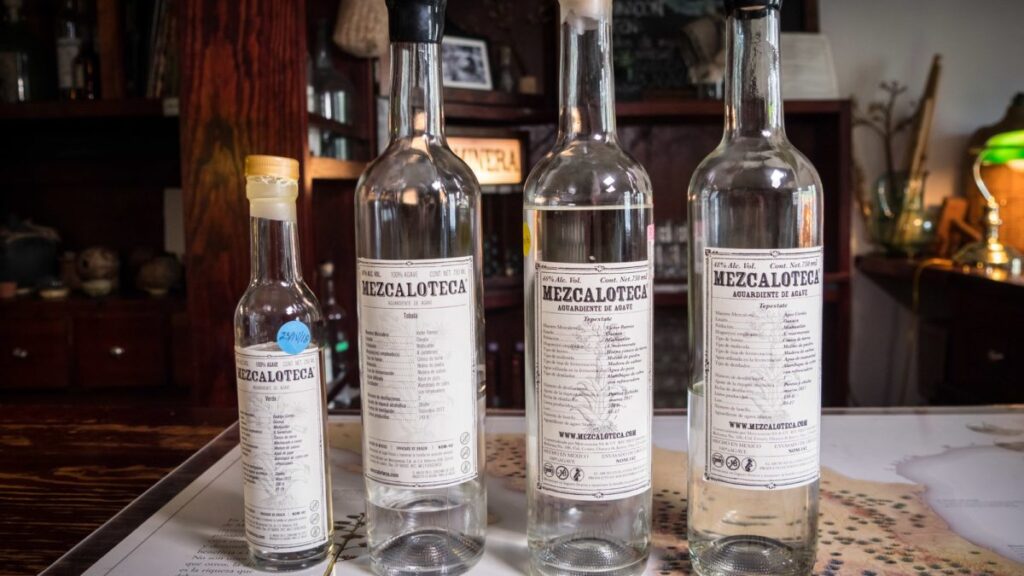
Tequila and Mezcal Tourism
For enthusiasts eager to delve deeper into the world of tequila and mezcal, embarking on a tequila and mezcal tourism journey in Mexico can provide an immersive and educational experience. From visiting distilleries to attending tasting festivals, there are numerous opportunities to learn about the production methods and cultural significance of these spirits.
Visiting tequila distilleries in Mexico
Jalisco, the birthplace of tequila, offers a myriad of tequila distilleries that welcome visitors. By embarking on distillery tours, you can gain firsthand knowledge of tequila production methods, witness the agave harvest, and sample a wide range of tequilas.
Some renowned tequila distilleries, such as Casa Herradura and José Cuervo, offer guided tours that take you through the entire tequila-making process, from agave fields to barrel aging. These experiences provide a deeper appreciation for the craftsmanship and dedication that goes into producing tequila.
Exploring mezcal production through tours
Oaxaca, the heartland of mezcal production, offers an incredible opportunity to explore mezcal production firsthand. Numerous mezcal distilleries in the region welcome visitors, providing unique insights into traditional production methods and the cultural significance of mezcal.
Mezcal tours often include visits to artisanal palenques (mezcal distilleries), where you can witness the different stages of production and interact with mezcaleros (mezcal makers). These tours allow you to immerse yourself in the rich history and heritage of mezcal, gaining a deeper understanding of the spirit’s cultural significance.
Tequila and mezcal tasting festivals
Tequila and mezcal tasting festivals are held throughout Mexico, providing a vibrant and celebratory atmosphere for experiencing these spirits. These festivals often feature a wide selection of tequilas and mezcals from various producers and regions, allowing you to taste and compare different expressions.
In addition to the tastings, these festivals often include educational workshops, cultural performances, and culinary experiences. They provide an all-encompassing experience that combines the flavors of tequila and mezcal with the cultural richness of Mexico.
Authentic experiences in tequila and mezcal regions
Beyond distillery tours and tasting festivals, there are plenty of other authentic experiences to be had in tequila and mezcal regions. Visiting agave fields, where you can witness the plant’s growth and cultivation, can provide a deeper connection to the source of these spirits.
Furthermore, engaging with local communities and artisans offers a more holistic understanding of the cultural and historical significance of tequila and mezcal. Participating in traditional rituals, such as the blessing of the agave harvest or watching artisans create handmade clay mezcal cups, can create lasting memories and a deeper appreciation for these spirits.
Pairing Tequila and Mezcal with Mexican Cuisine
Mexican cuisine is known for its vibrant flavors and diverse dishes, offering the perfect canvas for pairing with tequila and mezcal. The interplay between the complex flavors of these spirits and the diverse ingredients found in Mexican cuisine can create unforgettable dining experiences.
Tequila pairings with traditional Mexican dishes
Tequila pairs beautifully with a wide array of traditional Mexican dishes, enhancing flavors and providing a delightful contrast. The fresh and vibrant flavors found in ceviche, for example, pair exceptionally well with the citrusy and herbaceous notes of tequila.
Another classic pairing is tequila with tacos, particularly those featuring grilled meats or seafood. The bold and intense flavors of tequila can complement the smokiness of grilled meats or the briny flavors of seafood tacos, elevating the overall dining experience.
Mezcal and its compatibility with Mexican flavors
Mezcal, with its smoky and complex profile, lends itself particularly well to the rich and robust flavors found in Mexican cuisine. The earthy and smoky notes of mezcal can beautifully complement dishes such as mole, a traditional Mexican sauce made with chili peppers, spices, and chocolate.
Mezcal also complements the flavors of dishes that incorporate roasted or grilled ingredients. The smoky character of mezcal can enhance the smoky notes found in grilled meats or roasted vegetables, augmenting the richness and depth of the flavors.
Cheese and tequila/mezcal pairings
Tequila and mezcal both offer exciting possibilities for pairing with various types of cheeses. The agave-forward flavors of tequila can harmonize with the creamy and nutty flavors of aged Gouda, creating a balanced and intriguing combination.
Mezcal, with its smoky and bold characteristics, pairs wonderfully with strong and aged cheeses. The complex flavors of mezcal complement the sharpness of aged cheddar or the intense richness of blue cheeses, resulting in a delightful contrast of flavors.
Chocolate and tequila/mezcal pairings
The rich and indulgent flavors of chocolate can be enhanced by the complexities of tequila and mezcal. Pairing a high-quality dark chocolate with a smooth and aged tequila can create an incredibly luxurious taste experience.
For mezcal, the smoky and earthy notes can beautifully complement the bitterness and richness of dark chocolate. The interplay between the smokiness of mezcal and the deep flavors of dark chocolate creates a harmonious pairing that satisfies the senses.
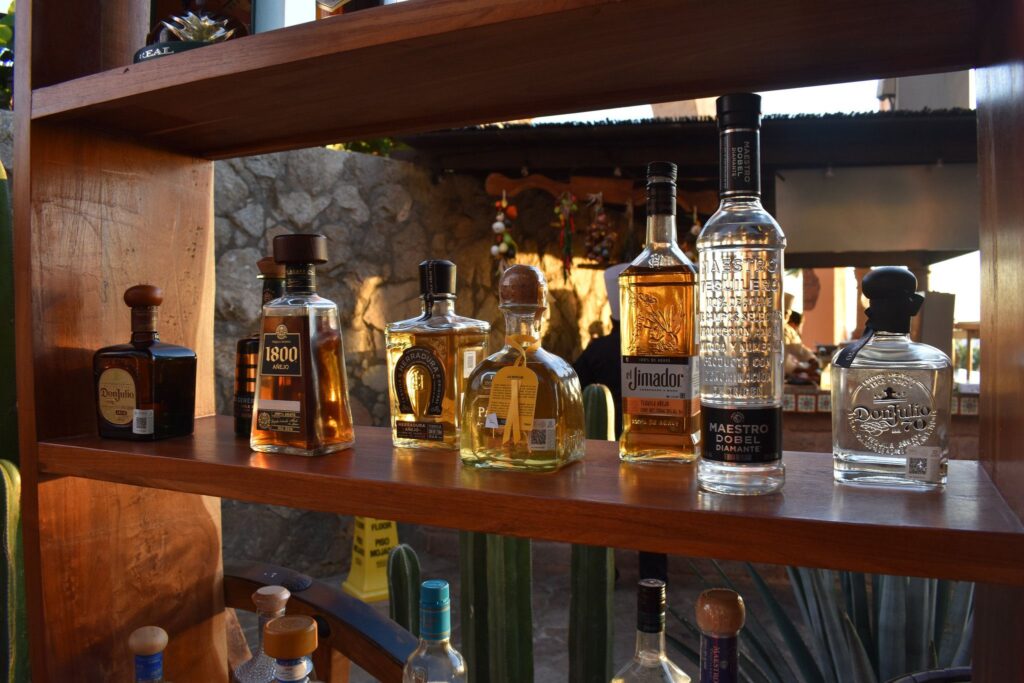
Tequila and Mezcal Tasting Etiquette
Tasting tequila and mezcal is not only about the flavors and aromas but also the ritual and appreciation of the spirit. Following proper tasting etiquette allows you to fully engage with the sensory experience and honor the craftsmanship behind these spirits.
Proper ways to taste tequila and mezcal
When engaging in a tequila or mezcal tasting, it is important to approach the experience with respect and mindfulness. Begin by ensuring that your palate is clean and neutral, avoiding strong flavors or scents beforehand that could influence your perception.
It is also advisable to taste tequila and mezcal in moderation, savoring each sip and allowing ample time between tastings to fully explore and appreciate the nuances of each spirit.
Observing the appearance and color
Before tasting, take a moment to observe the appearance and color of the tequila or mezcal in your glass. Note the clarity, viscosity, and any unique characteristics present. Some tequilas or mezcals may exhibit slight variations in color due to their aging process or production methods.
Noting these visual aspects can provide valuable insights into the craftsmanship and quality of the spirit.
Using the nose in tequila/mezcal tasting
The sense of smell plays a crucial role in the tasting experience of tequila and mezcal. When bringing the glass to your nose, take a moment to inhale gently, allowing the aromas to capture your attention.
Explore the various scents that emerge, identifying different notes and trying to discern any unique or unexpected aromas. Appreciating the aromatic elements adds depth and complexity to the overall tasting experience.
Savoring the flavors and finish
After observation and the initial scents, take a small sip of the tequila or mezcal and let it coat your palate. Allow the flavors to reveal themselves gradually, noting any distinctive tastes, mouthfeel, or evolving characteristics.
Pay attention to the finish, the sensations that linger after swallowing, and whether any new flavors or aftertastes emerge. Taking your time to savor these sensations allows you to fully immerse yourself in the complexity and pleasure of tequila and mezcal.
Preserving and Promoting Tequila and Mezcal Traditions
As tequila and mezcal continue to gain worldwide recognition and popularity, it is crucial to ensure the preservation of their traditions and authenticity. Various initiatives and practices are in place to safeguard the unique production methods and cultural heritage associated with these spirits.
Tequila and mezcal certification systems
To safeguard the quality and authenticity of tequila and mezcal, both spirits have certification systems in place. The Denomination of Origin (DO) certification ensures that tequila production adheres to specific regulations, including the use of blue agave, production in authorized regions, and compliance with traditional methods.
Similarly, mezcal production must comply with the designation of origin regulations to receive the certification. This certification guarantees that mezcal is produced using artisanal methods, specific agave varieties, and within designated regions.
Protecting traditional production methods
Preserving traditional production methods is essential in maintaining the authenticity and character of tequila and mezcal. Organizations like the Tequila Regulatory Council and The Mezcal Regulatory Council are dedicated to upholding the traditions and quality standards associated with these spirits.
These organizations monitor and ensure that tequila and mezcal production follows traditional techniques, supporting small-batch artisanal producers and safeguarding the cultural heritage of these spirits.
Promoting sustainable practices in the industry
As the demand for tequila and mezcal continues to increase, it is imperative to promote sustainable practices within the industry. This includes responsible agave cultivation, conservation of natural resources, and reduction of environmental impact.
Many tequila and mezcal producers have embraced sustainable practices, such as utilizing organic farming methods, minimizing water usage and waste production, and implementing recycling and reforestation efforts. These practices not only benefit the environment but also contribute to the long-term viability of tequila and mezcal production.
Educating consumers on the importance of authenticity
Education plays a pivotal role in promoting and preserving the traditions and authenticity of tequila and mezcal. By raising awareness about the cultural significance and production methods of these spirits, consumers can make informed choices and support producers who adhere to traditional practices.
Educational initiatives, such as workshops, tasting events, and digital content, help consumers better understand the complexities and nuances of tequila and mezcal. This knowledge fosters an appreciation for the craftsmanship and heritage behind these spirits and encourages consumers to seek out authentic and high-quality products.
In conclusion, exploring the fascinating history, diverse flavors, and cultural significance of tequila and mezcal can be an incredibly rewarding journey. From understanding the origins and production methods to enjoying them in traditional rituals or innovative cocktails, tequila and mezcal offer a truly authentic experience of Mexico’s rich heritage.
